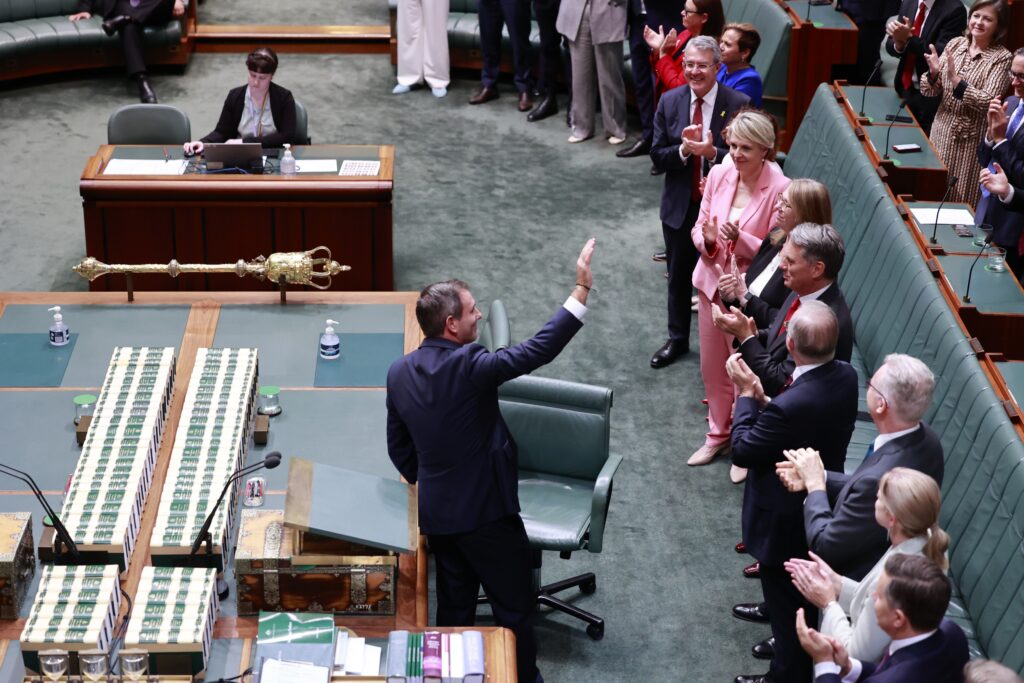More tax cuts for every Australian and reiterations of measures that had already been announced marked Tuesday night's federal budget, which also didn't include any specific funds for higher education.
The pre-election pitch, as expected, aimed to deliver cost-of-living relief, while seeking to avoid fuelling inflation with cash handouts. Most big measures in the budget papers, such as increased access to a bulk-billed GP and energy bill relief, the public already knew about.
That is partly because this budget wasn't really supposed to happen – the arrival of ex-Tropical Cyclone Alfred earlier this month meant Prime Minister Anthony Albanese couldn't follow his plan to call an election for April 12, necessitating a fourth budget.
Although all university leaders, staff and students will benefit from the $5 a week tax cuts and over a billion invested in health, there is scant direct support for a sector that has had 12 months of international student uncertainty and job cuts, and faces rising instability from its biggest research funder, the United States.
There is a plan in the budget papers to increase research funding by 10 per cent to $2.52bn in 2028-29, and funds for 100,000 fee-free TAFE places annually. Apprentices willing to train in housing construction can access a $10,000 payment, that has been doubled in this budget from $5000.
The budget papers have been criticised for being short-sighted and too focused on election sweeteners: tax cuts instead of tax reform; student debt relief instead of changing the course funding model.
The numbers
After two years of surpluses following 15 years of deficits, this budget is $26.9bn in the red, to be succeeded by about $180bn of deficits over the five-year budget period, including $42.1bn in 2025-26; $35.7bn in 2026-27; $37.2bn in 2027-28; and $36.9bn in 2028-29.
“A defining feature of our first three budgets was responsible economic management,” Mr Chalmers said.
“That will be a defining feature of the fourth as well. Even this year, where we will be printing a deficit, it will be much, much smaller than what we inherited from our political opponents, and that shows the progress we have been able to make.”
Clik here to view.

Australia-US relations
At a time the United States administration is having an impact on research at Australian universities, the federal government has also planned for impending tariffs, which are to become active April 2, and slower economic growth in the US and China over the next year.
"The global economy is facing considerable uncertainty and growth is expected to remain subdued over the next three years,” the budget economic outlook states.
“Escalating trade tensions have significantly magnified uncertainty in the global economy and volatility in global markets, and could disrupt trade, investment, economic activity, and push up prices.”
There is $20m in the next financial year for a "buy Australian" plan that includes initiatives to boost Australian-made products. Government departments will also buy more from Australia.
Group of Eight chief executive Vicki Thomson said this budget "overlooks" the real drivers of growth.
“In whatever sector of the economy the Government is prioritising, it is our research and innovation and our graduates who are critical to the nation fulfilling its economic and social potential,” she said.
“An increased defence spend must be supported by a workforce and R&D. Investment in health must be underpinned by medical research. A Future Made in Australia must be backed by investment in R&D to deliver that sovereign capability together with Australian industry."
Related stories: Universities Australia wishlist for next election | Innovative Research Universities’ pre-budget wishlist | Report card: Accord recommendations 12 months on
Australia spends 1.7 per cent of its GDP on research and development. The OECD average is 2.7 per cent. The Go8 said this budget should've included a 10-year plan to grow Australia's R&D spend to three per cent of GDP.
“But there’s a limit to how much our universities can contribute to R&D, given our reliance on international student fee revenue to fund research,” said Ms Thomson.
"Spending by international students has been invaluable in avoiding a recession and accounted for more than half Australia’s economic growth in 2023."
Universities Australia Luke Sheehy said the budget's cost-of-living relief for everyday Australians is important, but measures supporting the Universities Accord are missing.
“This is a difficult budget to deliver at a difficult time for Australians,” he said.
Clik here to view.

“Cost-of-living relief in the budget is a win for Australians when many are doing it tough, including
university students, and we welcome the government’s support in this way.
“We know that in a tight fiscal environment not every priority can be fully funded all at once, but an
investment in Australia’s universities is an investment in Australia, and a worthy one."
The federal government has "missed an opportunity" to come good on its plan to educate a million extra students a year by 2050, he said.
“We need strong universities to deliver the skilled workers and the research and development that make
our economy larger and more productive and drive our country’s progress," he added.
Student debt relief
Reforming how students are charged fees is a better plan than offering some debt relief, Mr Sheehy said, repeating a call to scrap Job-Ready Graduates (JRG), a funding regime that makes Arts degrees $50,000 and teaching degrees about $18,000.
The budget included already announced changes to HECS-HELP repayments, and an offer to wipe 20 per cent off all student debt if Labor is re-elected.
“JRG has unfairly altered fees for students and reduced funding to universities. This is counterintuitive to
the goal of growing our universities in line with Australia’s growing skills needs," he said.
“We want to work with the next federal government as a priority to set new funding rates and it’s
imperative that the next federal budget funds this work properly and fully."